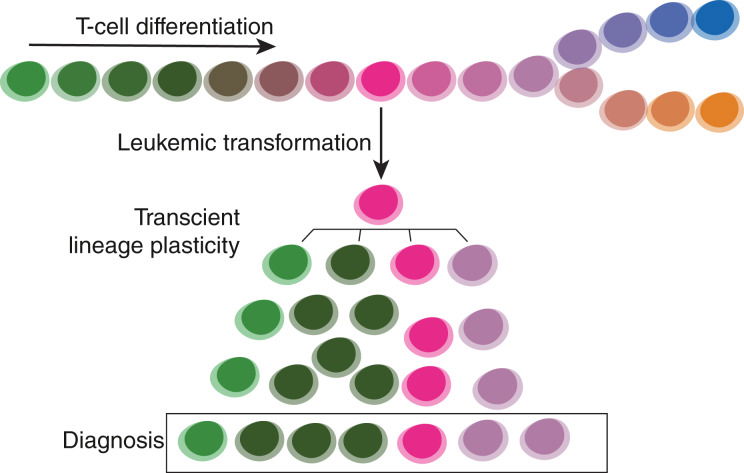Transient Differentiation-State Plasticity Occurs during Acute Lymphoblastic Leukemia Initiation

Vera M Poort, Rico Hagelaar, Markus J van Roosmalen, Laurianne Trabut, Jessica G C A M Buijs-Gladdines, Bram van Wijk, Jules Meijerink, Ruben van Boxtel
Cancer Res. 2024 Jun 17;84(16):2720–2733. doi: 10.1158/0008-5472.CAN-24-1090
Leukemia is characterized by oncogenic lesions that result in a block of differentiation, whereas phenotypic plasticity is retained. A better understanding of how these two phenomena arise during leukemogenesis in humans could help inform diagnosis and treatment strategies. Here, we leveraged the well-defined differentiation states during T-cell development to pinpoint the initiation of T-cell acute lymphoblastic leukemia (T-ALL), an aggressive form of childhood leukemia, and study the emergence of phenotypic plasticity. Single-cell whole genome sequencing of leukemic blasts was combined with multiparameter flow cytometry to couple cell identity and clonal lineages. Irrespective of genetic events, leukemia-initiating cells altered their phenotypes by differentiation and dedifferentiation. The construction of the phylogenies of individual leukemias using somatic mutations revealed that phenotypic diversity is reflected by the clonal structure of cancer. The analysis also indicated that the acquired phenotypes are heritable and stable. Together, these results demonstrate a transient period of plasticity during leukemia initiation, where phenotypic switches seem unidirectional.Significance: A method merging multicolor flow cytometry with single-cell whole genome sequencing to couple cell identity with clonal lineages uncovers differentiation-state plasticity in leukemia, reconciling blocked differentiation with phenotypic plasticity in cancer.


